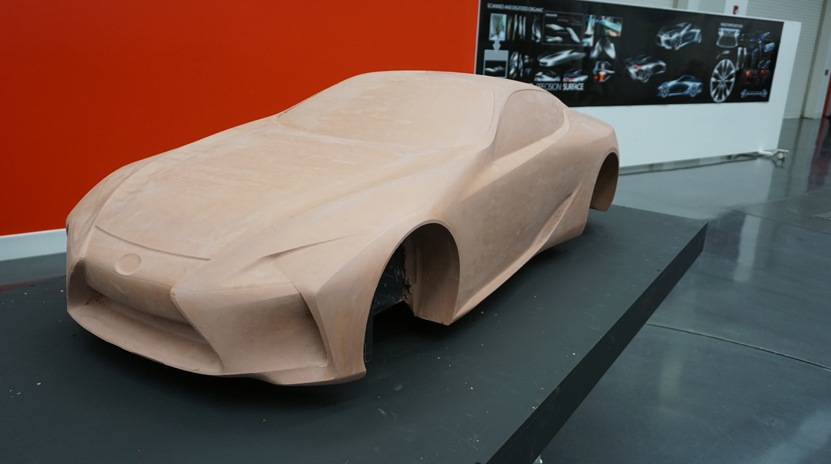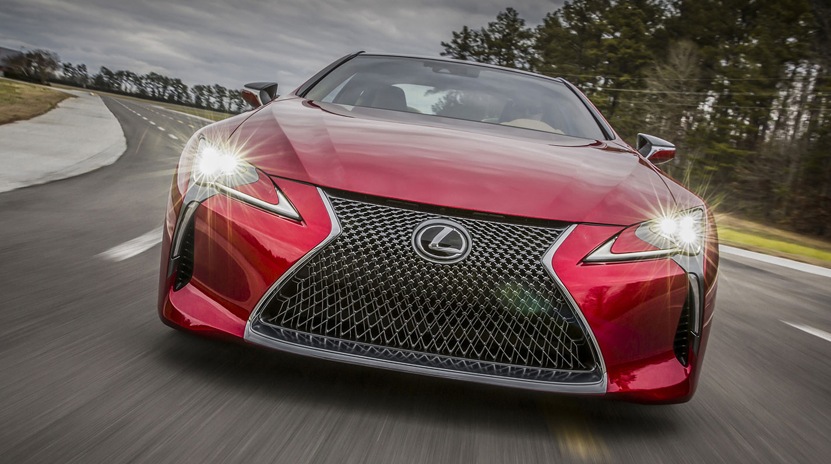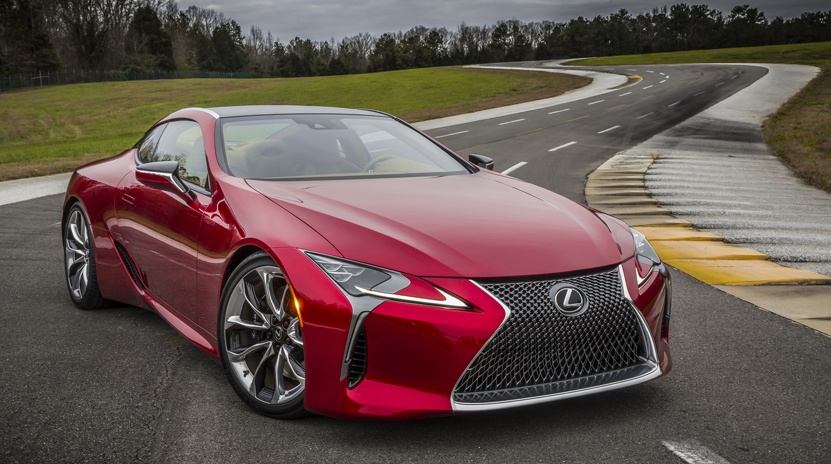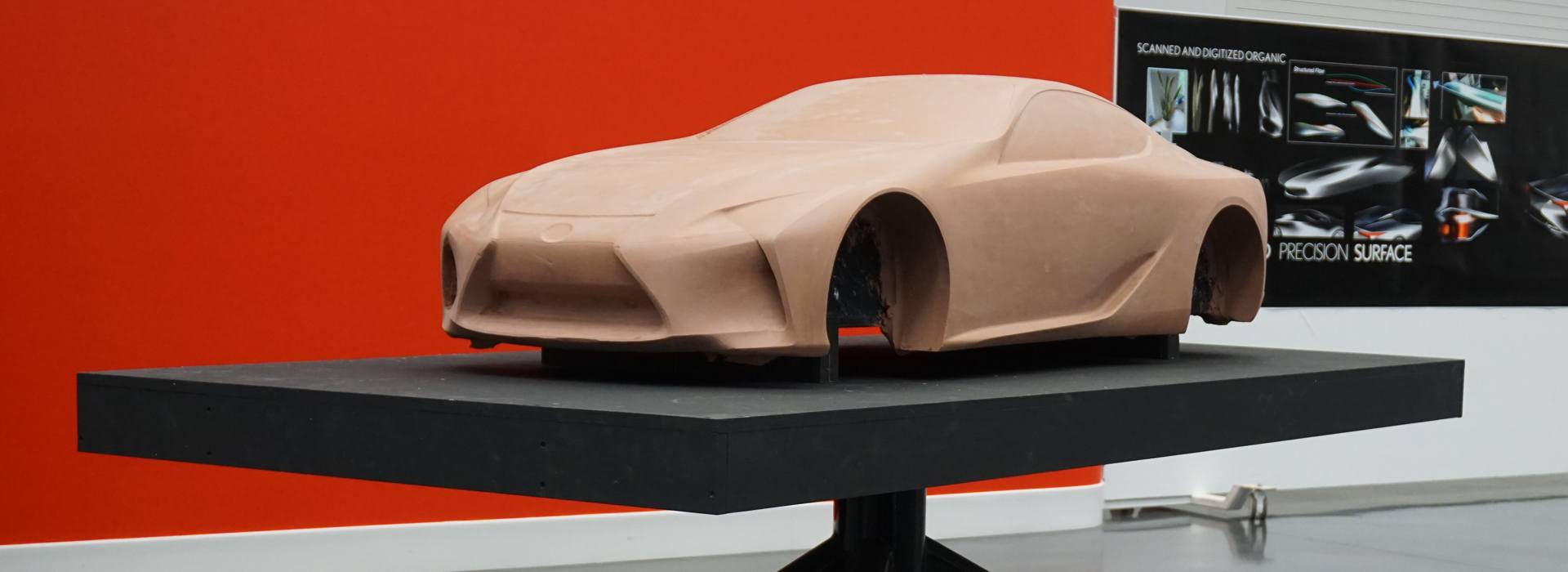It’s dynamic, beautiful, something completely unique, a car for the future but being made in the present. As you quickly scan the title and fine print the inevitable word emerges: concept. The disappointment is palatable. You’ll never be able to purchase this car, and you’ll never even be able to test-drive it. Another unattainable carrot dangled just out of reach. Which begs the question, what’s the point of a concept car? Why do the automotive giants use human and actual capital on cars that will never reach the production floor?
Few industries are as competitive as the auto industry. In an age where cars are increasingly becoming a luxury instead of a necessity, the need to stand out is imperative. It’s incredibly difficult to create something completely new. But the right concept car, a truly unique and forward thinking design, not only differentiates the car company, it serves several key functions. On a recent trip to Lexus, we had the chance to see firsthand how a concept car goes from dream-like design to faithfully rendered production car and how a concept affects a car company, both established and emerging.

Roadmap to the Future
A life long consumer for an automaker is a valuable resource. Brand loyalty can foster international success and concept cars are an opportunity to show loyal customers where the brand’s design is trending and keep them interested.
The Lexus LC-FC Concept debuted at the Detroit Auto Show in 2012 gaining plaudits from both the general public and pundits alike. A bold departure from the tried and true design language of Lexus/Toyota, it’s a great example of how the right concept car can create excitement and reinvigorate customers’ interest. Lexus stayed true to their design, and with the LC-500, delivered a near perfect execution of their concept.
It shows a dynamic future for Lexus. It’s clear the company is willing to take chances, and more importantly able to execute and bring to production something completely atypical of the stereotypical Lexus brand.
In a broader sense, looking at the way cars started moving from boxy tubs to aerodynamic bubbles in the late 80s/early 90s, you can bet distinctive design features from the LC-500 will start popping up in other Lexii as they bring the six-figure design features to their lower end models. They might even pop up in other companies too. For example, to the less initiated, current Hyundais look a lot like high end luxury cars from a few years ago. It’s only a matter of time before the LC-FC/LC-500’s effects spread to other companies.

Gauge Public Response
When a concept is released to the public it’s a low risk opportunity to gauge the response of the automotive world. An award or positive buzz confirms with the automaker that they are making the right design decisions and what to implement or drop for future production models.
The Lexus LC-FC was an immediate hit, winning Detroit’s Motor Show Best New Concept award in 2012. The production version followed in its path, winning the Eyes on Design award at the same auto show four years later. They left little doubt that Lexus was not only on the right track, but created an industry hit.
Now, as we get closer to the release, at lot of that goodwill is carrying over. Reviews for the car have been generally positive as well, putting a lot of focus on the aesthetics of the car. There’s little doubt that Lexus has their faithful rendition of an exciting concept to thank for that. They took the positive and energetic response for their LC-FC concept and were able to smoothly transfer it to their LC-500. We’re not saying this is exactly how it happened, but it’s as if their design and engineering teams said, “Well, they like it so much, let’s just make that one.” Their investment is paying off and the excitement for the car’s upcoming release is palpable.

Push Design Forward
Some concept cars are such obvious departures from current production models, that it’s not as easy to see the purpose of a design. These are often products of the in-house design department’s efforts to show their creative mettle. While the vast majority of these designs never make it to production, occasionally a concept comes along that not only establishes a new design and platform language but demonstrates the capability to make it through the engineering gauntlet.
We’ll go back to our earlier example of boxy to bubble. Someone was the first to do that in a significant way and the change to rounded edges, while it now feels predestination rather than a conscious design risk, at the time it was exactly that. Lexus is pushing something similar here.
This is one of the first mass-market luxury cars to move us closer to executing all those outlandish concepts we’ve been excited by in the past, as well as the ones we’ve seen Will Smith toss robots off. Once people see that there’s basically nothing but pessimism and money stopping us from getting our dream cars, we’re going to see a lot more radical changes to other companies’ designs.

Shift the Brand
A brand’s reputation is especially important for car companies and can be exceedingly hard to change. Heritage companies, the BMWs and Mercedes of the world, have built their reputation over decades. This is a crazy, left field example, but say BMW wanted a foundational change and suddenly started making commuter scooters. Three wheeled things that got like 200 city miles to the gallon. It’s not that the scooters are shitty scooters. They’re made by BMW, so you know the quality isn’t lacking. But BMW isn’t a scooter company, so what they hell were they thinking, trying to get in on that game? People want their 7 series. A slightly more concrete example would be how people who never existed in the world at the same time as the Ford Pinto know that, for years, the Ford Pinto was the easiest way to self-immolate. That was a quick shift for the negative and a decades long struggle to push back into the positive, which also is a broader lesson.
Newer car companies looking to change their reputation have a hard time too. You almost definitely have some preconceived notions about Kia or Honda, and probably even Lexus, and it takes creative and nuanced branding and products to change those notions. You don’t shake off or change a reputation in two model years. You work for a decade making incremental changes in public perception and finally arrive at something new.
Lexus is relatively young in the automotive world, but they are actively changing the brand. Design choices like a spindle grill, organic interior forms, and low body stance are all bold options purposely chosen to move Lexus in a new direction and signal to consumers that they’re producing bad ass cars worthy of their attention (and money).
It’s when brands need to change their identity that concept cars show their most beneficial value. A hybrid of realism and fantasy that both ignites the imagination and grounds itself in the physical world, the right concept car catches the eye, and in some cases begins the long incremental shift of customer loyalty. The LC-FC and the LC 500 accomplished the rare feat of bringing a concept car to the showroom floor.




